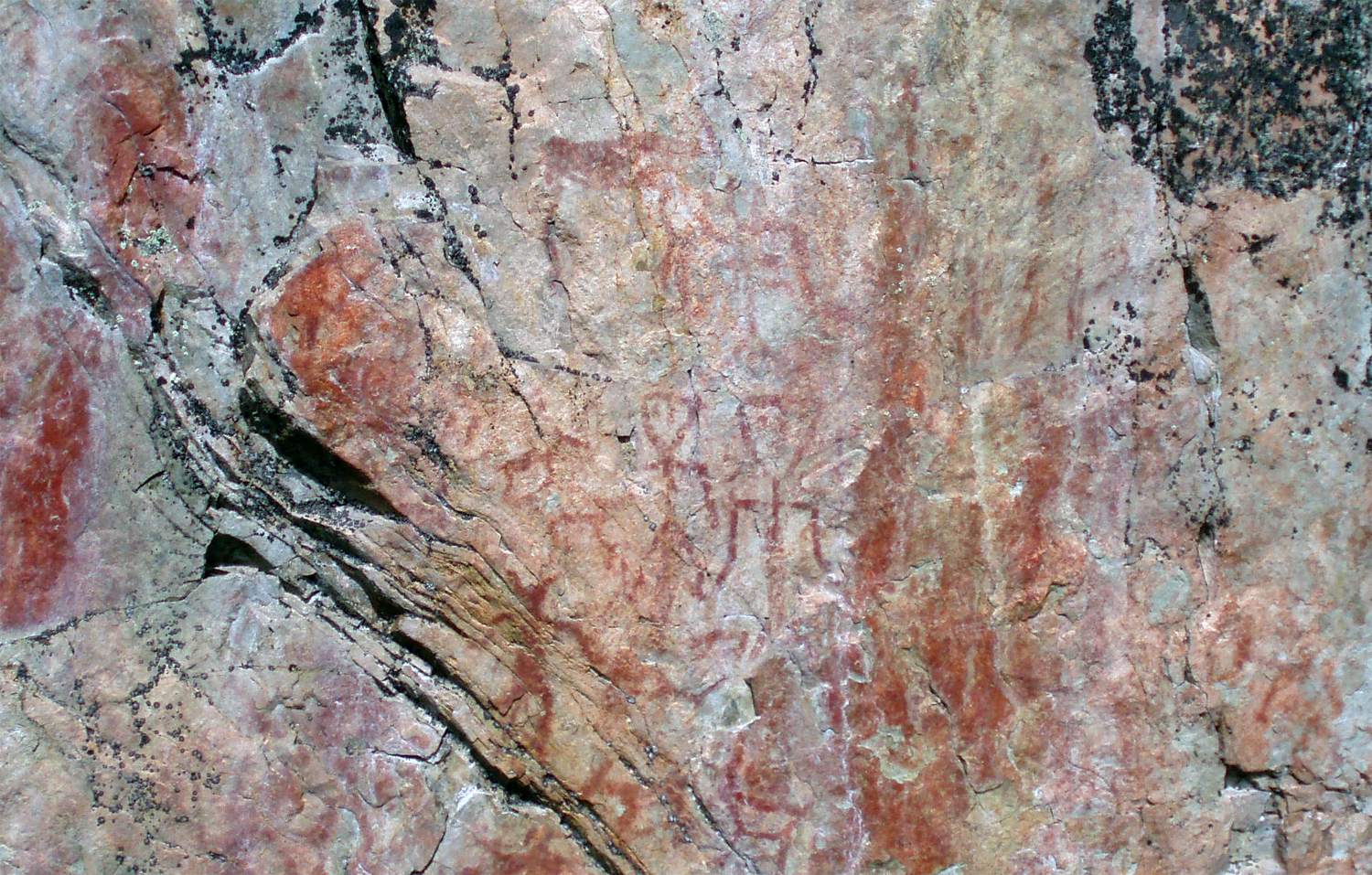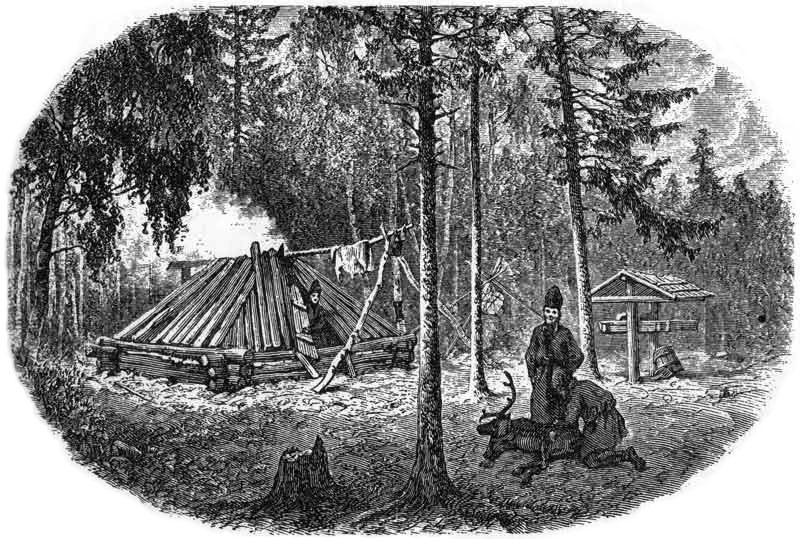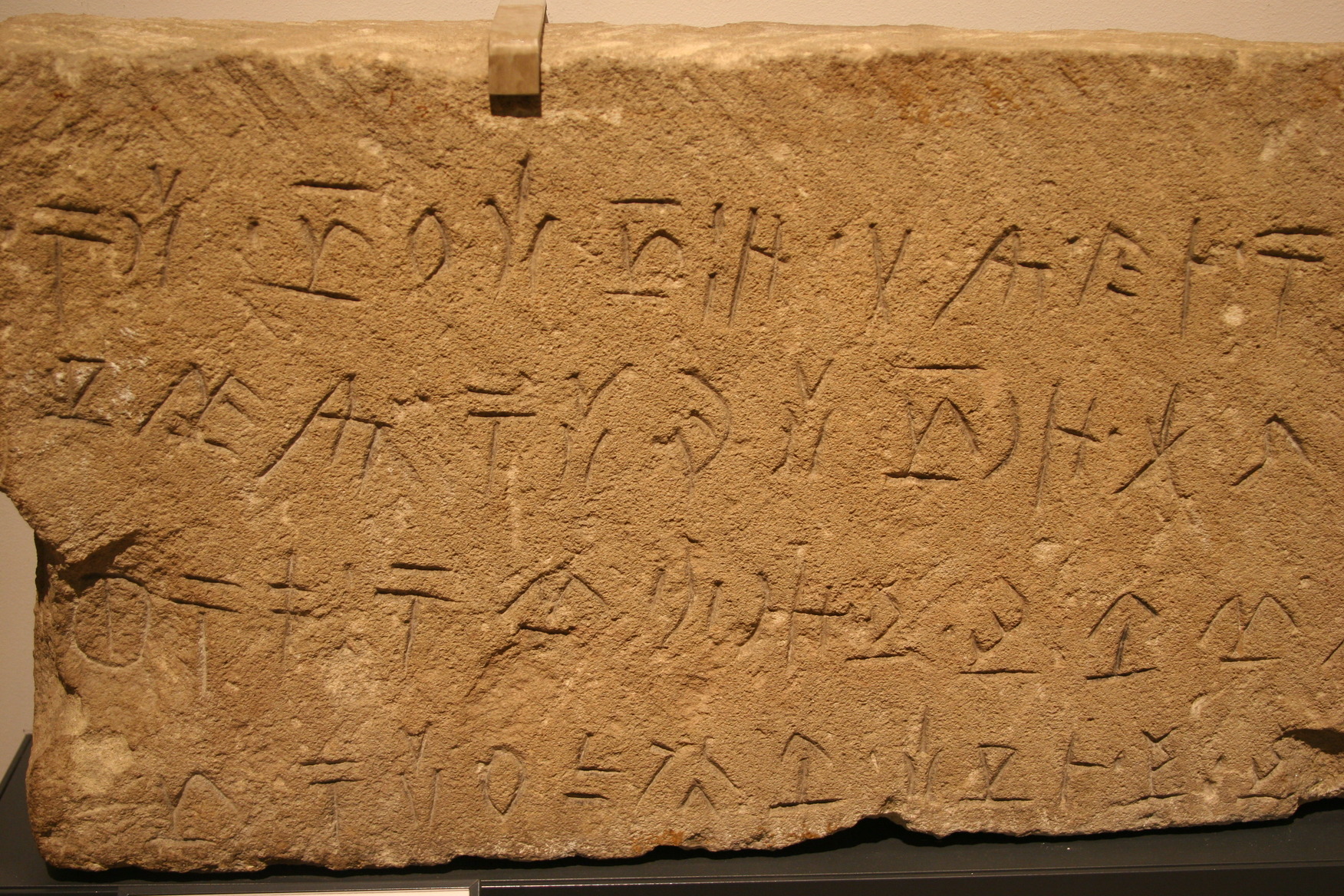|
Kainuu Sámi
Kainuu Sámi is an extinct Sámi language that was once spoken in Kainuu. It became extinct in the 18th century when the Kainuu Sámi began assimilating to the culture of the growing Finnish population. Kainuu Sámi belonged to the Eastern Sámi language group. In his review of Jaakko Anhava's book ''Maailman kielet ja kielikunnat'' ("Languages and language groups of the world", 1998), researcher of Finno-Ugric languages Tapani Salminen stated that the idea of the existence of a Kainuu Sámi language that is separate from Kemi Sámi is not well reasoned.Salminen, Tapani (2000). ''Uusi suomenkielinen kokonaisesitys maailman kielistä''. Virittäjä, No. 1. Page 154PDF Retrieved 2022-2-9. The original inhabitants of Kainuu were Sámi hunter-fishers. In the 17th century, the Governor General of Finland Per Brahe fostered the population growth of Kainuu by giving a ten-year tax exemption to settlers. It was considered necessary at the time by Finnish authorities to populate Kainu ... [...More Info...] [...Related Items...] OR: [Wikipedia] [Google] [Baidu] |
Finland
Finland, officially the Republic of Finland, is a Nordic country in Northern Europe. It borders Sweden to the northwest, Norway to the north, and Russia to the east, with the Gulf of Bothnia to the west and the Gulf of Finland to the south, opposite Estonia. Finland has a population of 5.6 million. Its capital and largest city is Helsinki. The majority of the population are Finns, ethnic Finns. The official languages are Finnish language, Finnish and Swedish language, Swedish; 84.1 percent of the population speak the first as their mother tongue and 5.1 percent the latter. Finland's climate varies from humid continental climate, humid continental in the south to boreal climate, boreal in the north. The land cover is predominantly boreal forest biome, with List of lakes of Finland, more than 180,000 recorded lakes. Finland was first settled around 9000 BC after the Last Glacial Period, last Ice Age. During the Stone Age, various cultures emerged, distinguished by differen ... [...More Info...] [...Related Items...] OR: [Wikipedia] [Google] [Baidu] |
Sámi Languages
The Sámi languages ( ), also rendered in English language, English as Sami and Saami, are a group of Uralic languages spoken by the Indigenous Sámi peoples in Northern Europe (in parts of northern Finland, Norway, Sweden, and extreme northwestern Russia). There are, depending on the nature and terms of division, ten or more Sami languages. Several spellings have been used for the Sámi languages, including ''Sámi'', ''Sami'', ''Saami'', ''Saame'', ''Sámic'', ''Samic'' and ''Saamic'', as well as the Endonym and exonym, exonyms Lappish and ''Lappic''. The last two, along with the term ''Lapp'', are now often considered pejorative. Classification The Sámi languages form a branch of the Uralic languages, Uralic language family. According to the traditional view, Sámi is within the Uralic family most closely related to the Finnic languages (Sammallahti 1998). However, this view has recently been doubted by some scholars who argue that the traditional view of a common Finno-Sam ... [...More Info...] [...Related Items...] OR: [Wikipedia] [Google] [Baidu] |
Kemi Sámi
Kemi Sámi was a Sámi language that was originally spoken in the southernmost district of Finnish Lapland as far south as the Sámi siidas around Kuusamo. A complex of local variants which had a distinct identity from other Sámi dialects, but existed in a linguistic continuum between Inari Sámi and Skolt Sámi (some Kemi groups sounded more like Inari, and some more like Skolt, due to geographic proximity). Extinct now for over 100 years, few written examples of Kemi Sámi survive. Johannes Schefferus's '' Lapponia'' from 1673 contains two yoik poems by the Kemi Sámi Olof (Mattsson) Sirma, "Guldnasas" and "Moarsi favrrot". A short vocabulary was written by the Finnish priest Jacob Fellman in 1829 after he visited the villages of Salla (Kuolajärvi until 1936) and Sompio.Äima, F, Itkonen, T.I. 1918: Jacob Fellmanin muistiinpanot Sompion ja Kuolajärven lapin murteista. Suomalais-Ugrilaisen Seuran Aikakauskirja 30 p. 1-91. Sample texts The following translati ... [...More Info...] [...Related Items...] OR: [Wikipedia] [Google] [Baidu] |
Kainuu
Kainuu (), also historically known as Cajania (), is one of the 19 regions of Finland (''maakunta'' / ''landskap''). Kainuu borders the regions of North Ostrobothnia, North Savo and North Karelia. In the east, it also borders Russia (Republic of Karelia). Culturally Kainuu is part of larger Eastern-Finnish cultural heritage. The dialect of Kainuu resembles Savonian and Karelian dialects. Geography Boreal forest makes up most of the biome in Kainuu. The forest in Kainuu mostly consists of birches, pines and spruces. The atypical regional geography and landscape consist of lakes, hills and vast uninhabited forest areas. The largest lake in the region is the Oulujärvi (928.09 km2), one of the largest lakes in Finland. Its shorelines, open waters and islands in Kainuu belong to the municipalities of Paltamo and Kajaani. The highest point in Kainuu is the Iso Tuomivaara (385 m), located in the municipality of Hyrynsalmi. The regional climate is continental. The three mos ... [...More Info...] [...Related Items...] OR: [Wikipedia] [Google] [Baidu] |
Forest Sámi
The forest Sámi () are Sámi people who lived in the woods and who, unlike the reindeer-herding Sámi people (the "fell Sámi"), did not move up into the fells during the summer season. Historically, there have been forest Sámi in Sweden in the area ranging from northern Ångermanland to the far north. In the early 1600s the term ''granlapp'' was also used to refer to the Sámi people who paid taxes only to Sweden, compared to the semi-nomadic fell Sámi, who, since they worked in the fells that straddled the Swedish- Norwegian border, had to pay taxes to both countries. When Ernst Manker studied the life of the forest Sámi in the early 20th century, nearly all of their habitations had been abandoned. Only one forest Sámi village remained, in Malå in Västerbotten, an area known as Stenundslandet in Anundsjö. There is a modern-day group who consider themselves forest Sámi in Finland, but they are not part of the Sámi parliament, for example. Background Historically, ther ... [...More Info...] [...Related Items...] OR: [Wikipedia] [Google] [Baidu] |
Extinct Language
An extinct language or dead language is a language with no living native speakers. A dormant language is a dead language that still serves as a symbol of ethnic identity to an ethnic group; these languages are often undergoing a process of revitalisation. Languages that have first-language speakers are known as modern or living languages to contrast them with dead languages, especially in educational contexts. Languages have typically become extinct as a result of the process of cultural assimilation leading to language shift, and the gradual abandonment of a native language in favor of a foreign ''lingua franca''. As of the 2000s, a total of roughly 7,000 natively spoken languages existed worldwide. Most of these are minor languages in danger of extinction; one estimate published in 2004 expected that some 90% of the languages spoken at that time will have become extinct by 2050. Language death Normally the transition from a spoken to an extinct language occurs when a ... [...More Info...] [...Related Items...] OR: [Wikipedia] [Google] [Baidu] |
Finnish Language
Finnish (endonym: or ) is a Finnic languages, Finnic language of the Uralic languages, Uralic language family, spoken by the majority of the population in Finland and by ethnic Finns outside of Finland. Finnish is one of the two official languages of Finland, alongside Swedish language, Swedish. In Sweden, both Finnish and Meänkieli (which has significant mutual intelligibility with Finnish) are official minority languages. Kven language, Kven, which like Meänkieli is mutually intelligible with Finnish, is spoken in the Norway, Norwegian counties of Troms and Finnmark by a minority of Finnish descent. Finnish is morphological typology, typologically agglutinative language, agglutinative and uses almost exclusively Suffix, suffixal affixation. Nouns, adjectives, pronouns, Numeral (linguistics), numerals and verbs are inflection, inflected depending on their role in the Sentence (linguistics), sentence. Sentences are normally formed with subject–verb–object word order, alth ... [...More Info...] [...Related Items...] OR: [Wikipedia] [Google] [Baidu] |
Sámi People
The Sámi ( ; also spelled Sami or Saami) are the traditionally Sámi languages, Sámi-speaking indigenous people inhabiting the region of Sápmi, which today encompasses large northern parts of Norway, Sweden, Finland, and of the Kola Peninsula in Russia. The region of Sápmi was formerly known as Lapland, and the Sámi have historically been known in English as Lapps or Laplanders, but these terms are regarded as offensive by the Sámi, who prefer their own endonym, e.g. Northern Sámi . Their traditional languages are the Sámi languages, which are classified as a branch of the Uralic language family. Traditionally, the Sámi have pursued a variety of livelihoods, including coastal fishing, fur trapping, and Shepherd, sheep herding. Their best-known means of livelihood is semi-nomadic reindeer herding. about 10% of the Sámi were connected to reindeer herding, which provides them with meat, fur, and transportation; around 2,800 Sámi people were actively involved in reindeer ... [...More Info...] [...Related Items...] OR: [Wikipedia] [Google] [Baidu] |
Per Brahe The Younger
Count Per Brahe the Younger (18 February 1602 – 12 September 1680) was a Swedish soldier, statesman, and author. He served as Privy Councillor from 1630, Lord High Steward from 1640, as well as Governor-General of Finland in 1637–1640 and 1648–1654. Brahe fought in Prussia during the Polish War (1626–1629) and in Germany in 1630. However, his military activity later yielded to his political activity, and he held posts of Privy Councillor and Lord High Steward of Sweden. During the minority of Queen Christina (1632–1644) and after the death of King Charles X in 1660, he was one of the regents of Sweden. During his time as Governor-General of Finland, he made large administrative reforms, introduced a postal system, improved and developed commerce and agriculture, and promoted education. He was the founder of the Royal Academy of Turku and the town of Raahe (), along with ten other new towns in Finland. Life Brahe was born in Rydboholm Castle (now in Österå ... [...More Info...] [...Related Items...] OR: [Wikipedia] [Google] [Baidu] |
Savonia (historical Province)
Savo, or Savonia (; ), is a historical province in the east of Finland. It borders Tavastia, Ostrobothnia and Karelia. Savo is now divided into two provinces: North Savo and South Savo. The largest cities in Savo by population are Kuopio, Mikkeli, Savonlinna, Varkaus and Iisalmi. Administration In the 19th century, Savo was divided between Kuopio Province and Mikkeli Province. From 1997 to 2010, it lay within the administrative province of Eastern Finland. The provinces have no administrative function today but survive as ceremonial units. Since 2010, Savo has been divided between the regions of North Savo and South Savo. History The province of Savo represents the original homeland of the Savonians, one of the subgroups that later became assimilated to form the Finns. It was the heartland of the east Finnish or Savo dialects. The people of Savo traditionally pursued slash-and-burn agriculture, which settlers successfully imported into Ostrobothnia and Kainuu, V� ... [...More Info...] [...Related Items...] OR: [Wikipedia] [Google] [Baidu] |
Languages Of Finland
The two main official languages of Finland are Finnish and Swedish. There are also several official minority languages: three variants of Sami, as well as Romani, Finnish Sign Language, Finland-Swedish Sign Language and Karelian. Finnish Finnish is the language of the majority, 85.7% of the population in 2022. It is a Finnic language closely related to Estonian and less closely to the Sami languages. Swedish Swedish is the main language of 5.2% of the population in 2022 (92.4% in the Åland autonomous province), down from 14% at the beginning of the 20th century. In 2012, 44% of Finnish citizens with another registered primary language than Swedish could hold a conversation in this language. Swedish was the language of the administration until the late 19th century. Today it is one of the two main official languages, with a position equal to Finnish in most legislation, though the working language in most governmental bodies is Finnish. Both Finnish and Swedish are comp ... [...More Info...] [...Related Items...] OR: [Wikipedia] [Google] [Baidu] |
Sámi In Finland
Acronyms * SAMI, ''Synchronized Accessible Media Interchange'', a closed-captioning format developed by Microsoft * Saudi Arabian Military Industries, a government-owned defence company * South African Malaria Initiative, a virtual expertise network of malaria researchers People * Sami (name), including lists of people with the given name or surname * Sámi people, the indigenous people of Norway, Sweden, the Kola Peninsula and Finland * Samantha Shapiro (born 1993), American gymnast nicknamed "Sami" Places * Sami (ancient city), an ancient Greek city in the Peloponnese * Sami, Burkina Faso, a district * Sämi, a village in Lääne-Viru County in northeastern Estonia * Sami District, Gambia * Sami, Cephalonia, Greece, a municipality ** Sami Bay, east of Sami, Cephalonia * Sami, Gujarat, India, a town * Sami, Paletwa, Myanmar, a town Other uses * Sámi languages, languages spoken by the Sámi * Sami (chimpanzee), kept at the Belgrade Zoo * Sami, a common name for ''Pro ... [...More Info...] [...Related Items...] OR: [Wikipedia] [Google] [Baidu] |




